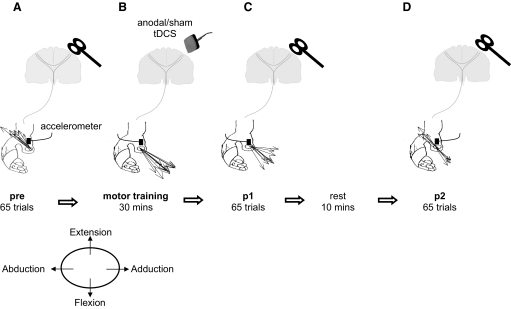FIG. 1.
Schematic representation of the main experiment setup. A: pre. Transcranial magnetic stimulation (TMS)–evoked movement directions were derived from the first-peak acceleration in the 2 major axes of the movement (extension/flexion and abduction/adduction) measured by an accelerometer mounted on the proximal phalanx of the thumb. Black arrows indicate the direction of individual TMS-evoked thumb movements (in this case extension and abduction). B: motor training. Pre was followed in 2 separate sessions randomly ordered by 30 min of motor training with either sham or anodal transcranial DC stimulation (tDCS) being applied over the left primary motor cortex (M1). Voluntary thumb movements were performed in a direction opposite to the baseline TMS-evoked movement direction (in this case: flexion and adduction). C: post 1 (p1). The direction of TMS-evoked thumb movements was determined as previously measured in pre. D: post 2 (p2). The subjects rested for 10 min and the direction of TMS-evoked thumb movements was again determined.

